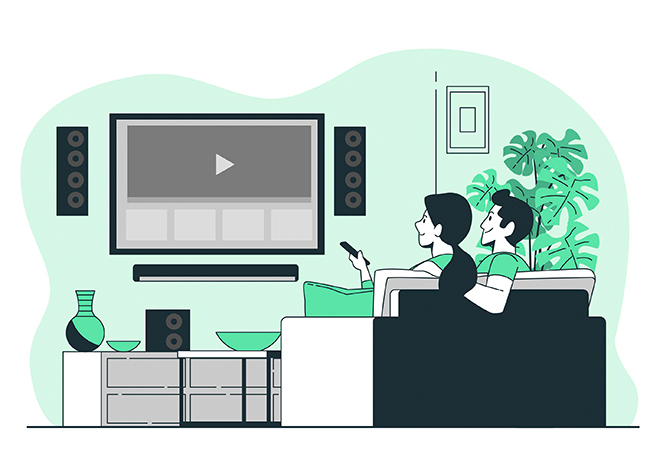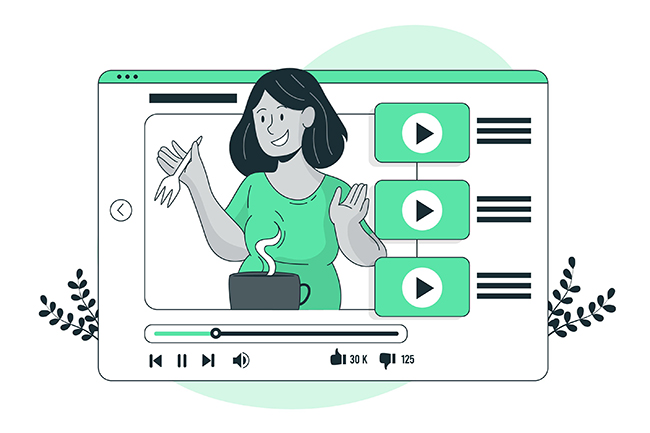content
Where CPV Comes From — and Why It Matters
CPV emerged as a response to how people consume content today. Users read less and watch more. YouTube, TikTok, Reels, Shorts — the digital world revolves around video. Platforms adapted quickly: instead of paying per click, advertisers were offered the chance to pay per view.
CPV means you only pay when someone watches your video for a defined amount of time. On Google Ads, this typically means 30 seconds, or the full video if it’s shorter, or any interaction (click, like, subscribe). Put simply: if the viewer sticks around, you pay.

CPV ≠ CPM: Don’t Mix Them Up
CPM (Cost per Mille) is the cost per 1,000 impressions. It doesn’t care if someone watched or skipped your ad. An impression happens — money leaves your account.
CPV goes deeper. You pay for actual engagement, not just a passive appearance on screen. That’s why CPV often leads to better-quality interactions and a higher potential for downstream conversion.
| Metric | What You Pay For | What Counts |
|---|---|---|
| CPM | 1,000 impressions | Just an ad view |
| CPC | A click | User interaction |
| CPV | A video view | 30 seconds or full video |
How Google Ads Calculates CPV
In Google Ads, the formula is straightforward:
CPV = Total cost ÷ Number of paid views
A “paid view” means either a 30-second watch, watching the entire video (if shorter), or clicking/interacting with the video. If someone only watches 10 seconds and skips — you don’t pay.
In campaigns like TrueView in-stream ads (skippable), CPV is the standard bidding model. You can choose manual CPV or automated strategies like “maximize views.”
CPV Across Other Platforms: Meta, TikTok, LinkedIn
- Meta (Facebook, Instagram): CPV can be tracked manually but isn’t the core model. You can optimize for ThruPlay (15 seconds or full video), which is Meta’s version of CPV.
- TikTok Ads: CPV is dynamic and often counted from just 6 seconds in brand-focused campaigns. Great for top-of-funnel reach and awareness.
- LinkedIn: CPV is available but pricier — typically $0.20–$0.50 per view. Most effective in B2B where engagement and storytelling matter more.
When Is CPV a Smart Choice?
- Brand awareness: You want to be seen, remembered, and associated with a story or feeling.
- Product launches: CPV helps introduce new products with emotion and narrative.
- Remarketing: Warm up previous website visitors with short, engaging video messages.
Tips to Optimize CPV Campaigns
- Target smart: Use Google’s audience targeting — interests, intent, keywords, demographics, remarketing lists.
- Bid with purpose: Start with manual CPV to gauge market rate. Transition to automated as you scale.
- Keep it short and punchy: Aim for videos under 30 seconds with your brand/logo in the first 5 seconds.
- Leverage audiences: Build similar audiences based on high watch rates — these are your warmest prospects.
How to Monetize Video Views
A view is just a step — not the goal. Here’s how to make it work:
- Run remarketing ads to people who watched 50–100% of your video.
- Use YouTube remarketing lists for time-sensitive offers or promos.
- Integrate CPV campaigns with search and display to cover all funnel stages.
📌 One of our clients in the sports nutrition niche started with CPV campaigns on YouTube, then retargeted viewers via search ads. Result: cost per lead dropped 22% compared to cold search alone.

Challenges and Limitations of CPV
- View ≠ intent: People might leave the video running in another tab.
- Attribution gaps: It’s hard to track if a view led to a sale — especially across devices.
- Attention competition: You’re fighting against memes, cats, and cooking hacks. Be memorable fast.
Real Case: How a Small Activewear Brand Used CPV to Build a Scalable Funnel
Meet Strive Motion — a fictional but very plausible activewear startup based in Austin, Texas. Their mission? Produce high-quality leggings, shorts, and hoodies from recycled materials. Their challenge? Competing with established giants in a saturated market, all while running on a tight marketing budget.
The team had already tried Meta and TikTok Ads but saw high acquisition costs and inconsistent performance. That’s when they shifted focus to CPV campaigns in Google Ads, specifically using skippable in-stream ads on YouTube. The goal wasn’t mass reach — it was engagement. They only wanted to pay for viewers who chose to watch their story.
The Evolution and Rise of UGC: From Casual Reviews to a Marketing Phenomenon
Strive Motion launched a 30-second video showing how their apparel adapted to Austin’s unpredictable weather — sun, wind, light rain — with a dynamic, real-life pace. The video was emotional but grounded, highlighting eco-conscious performance wear without sounding preachy.
Targeting was surgical. They focused on YouTube users in Texas who had recently searched for phrases like “eco friendly gym clothes,” “running shorts for summer,”” and “sustainable workout gear.” Thanks to the CPV model, they paid only when someone watched at least 30 seconds or clicked through.
In the first month, they generated over 120,000 views at an average CPV of $0.03. Around 45,000 users were added to their remarketing audience.

With this warm audience, Strive launched targeted conversion campaigns offering a 10% discount for first-time customers. The result? A conversion rate of 4.8% — double their average. Within two months, CPV-based campaigns helped lift overall ROAS by 32%.
What started as a low-risk test turned into a core part of their funnel. The CPV model didn’t just save money — it helped Strive Motion validate creative, build awareness, and create a monetizable audience that other platforms simply failed to capture.
Conclusion
CPV isn’t “just another metric.” It’s a gateway to attention, emotion, and engagement. Done right, it’s as powerful as CPC or CPA — and often cheaper at the top of the funnel.
Key takeaways:
- CPV means you pay only for actual views (30 sec or full video).
- It’s great for awareness, storytelling, and retargeting campaigns.
- Google Ads offers the most mature CPV targeting and tracking tools.
- Successful CPV ads need tight targeting, short videos, and follow-up strategy.
- A view is not a result — it’s the beginning of the customer journey.
- Limitations include attribution challenges and fierce competition for attention.
Want help with launching effective CPV campaigns? ADV Advantage can guide you from storyboarding to scaling.
Subscribe to our newsletter



